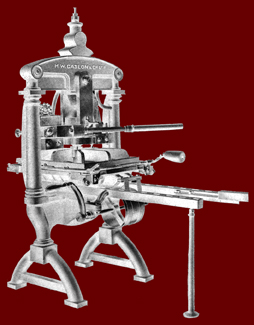|
|
|
|
|
PRINTMAKING screen printing
PRINTMAKING
|
|
 |
|
|
Elizabeth Frink DBE., RA - screenprint
Baboon, (56 x 75cm), published by Curwen Chilford & the artist
|
|
|
|
 |
|
|
|
SCREENPRINTING
Julia working in the screenprinting studio at Anglia Ruskin University 1997
While universities and workshops may offer professional screen printing beds, excellent results can be obtained by using a relatively cheap home made bed. (see below for details)
|
|
|
|
 |
|
|
|
Reka in the studio at Anglia Ruskin University
|
|
|
|
 |
|
|
MONOPRINT / SCREENPRINT
Vittoria Wellen: self portrait [2005] water soluble pastels and Rowney water soluble base, printed on Fabriano 5 paper.
|
|
|
|
MONOPRINT
An easy introduction to screenprinting is by drawing onto a prepared screen with oil pastels. A release agent can be created by mixing a portion of the extender base with screen wash. Place this mixture on the screen to form a reservoir as one would normally place the ink. From this draw the squeegee across the design and print.
The advantage of this process is that is cheap and fast. Prints can be produced rapidly and with few problems, as soon as the design is complete. Added to that the design can be printed in a full range of colours without the need to print each colour with a separate screen. This is called a monoprint but if one is careful it should be fairly easy to produce 3 or more prints that are similar, though rarely identical.
Water based inks are safer and should give results which are just as good.
|
|
|
|
This page was last updated on 20th September 2010
|
|
|
|
|
|
|
|
|
|
|
|
|
|
|
|
|
|
|
|
|
|




